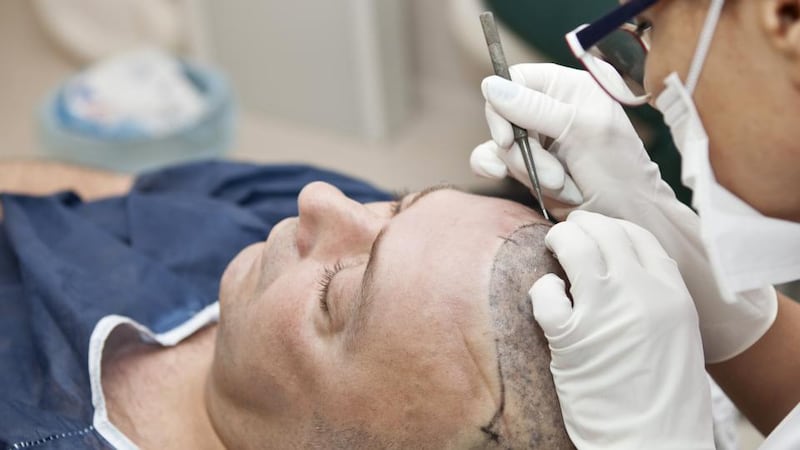A couple meet at university, bright and ambitious. They marry and move to Dublin for work. He is a doctor, she is an engineer.
A surgeon working in cardiothoracics, he loves his work, if not the 70-hour weeks and the increasing bureaucracy he has to deal with. She, meanwhile, having taken maternity leave from her engineering job, finds herself facing an all-or-nothing ultimatum when she tries to return to work on a part-time basis.
She takes a career break, does a master’s degree in ecommerce and sets up a web design business from their suburban home. He works in public and private practice. The hours don’t get any shorter for either of them.
A few years later, their family has grown, the recession has hit and, for him, the long hours away from his children are taking a toll. The couple begin to think about alternative ways of making a living.
In the pristine treatment rooms I feel as if I have walked on to a spaceship
They start small, giving Botox injections in their spare bedroom. The business takes off, leaving the neighbours wondering about the number of wary strangers pulling up in their cars outside the couple’s home and coming out again later looking strangely satisfied.
By 2017, he has trained as a hair transplant surgeon and she as a hair transplant technician. They open a clinic in a spacious, light-filled building in the suburbs, offering surgical hair restoration for both men and women, while also continuing to provide anti-wrinkle treatment (Botox to you and me).
The clinic does not do “the frozen look”, however, preferring instead to send clients – all of whom have to be over the age of 25 – back out into the world with a “natural” appearance.
In the whirlwind of cocktail parties, gala openings and weekends spent running with the hounds that furnish my life, I find myself passing the clinic quite often and wondering about it.
Oh no, sorry, I’m mixing myself up with someone else. What I mean is: on my way to the supermarket in my battered car, I quite often pass the clinic, and I’m curious. Then one day I’m invited in to look around. In the pristine treatment rooms, among the banks of hooded microscopes, I feel as if I have walked on to a spaceship.

If hair transplant surgery was once the preserve of the rich and famous, it’s not any more. This clinic, they tell me, provides an affordable service, without compromising on quality or expertise, by being based in an area with reasonable rents and by employing local people and training them as technicians.
Typical male clients range from a young man who experienced bullying at school when his hair began to recede, to a man in his 60s who is back on the dating scene after a long marriage. But it’s not only men who look to hair restoration to boost their confidence.
Forty per cent of the clinic’s inquiries for surgical hair transplants come from women, many of whom wish to have their hairline lowered. There are also transgender clients who want to lose their male hairline, the shape of which is rather poetically described as a “butterfly”.
I ask what the process would be if I was to walk in looking for a hair transplant. “You’d be given a free consultation to assess your psychological and physical readiness for a non-reversible procedure,” I’m told.
The clinic plans to offer hair care to young customers, among them cancer patients and those with alopecia
There are many people waiting, apparently, to have small circular incisions made in their scalps so that hair follicles can be harvested from where they are plentiful to replenish where they are not.
I’m shown pictures of white scalps pinpricked with blood, of freshly plucked follicles resting on gloved hands.
These spark a vivid memory of my Crolly doll, which I found under the Christmas tree one year when the stars were aligned. I loved her so much I wanted to consume her. I remember running my fingers along the roots of the dark-brown hair crocheted into her scalp in neat mathematical lines.
On being told that local anaesthetics and oral medications for sedation are used, I wonder how badly it hurts.
Standing in the immaculate treatment room, we discuss the future and the holistic hair care the clinic plans to offer to all sorts of customers, including children, among them cancer patients and those with alopecia.
I looked out of the long window, at the bare winter trees, confidently relying on their foliage to return in spring. Not all of nature’s children are quite so lucky.
I leave with my wrinkles intact, feeling almost subversive.













